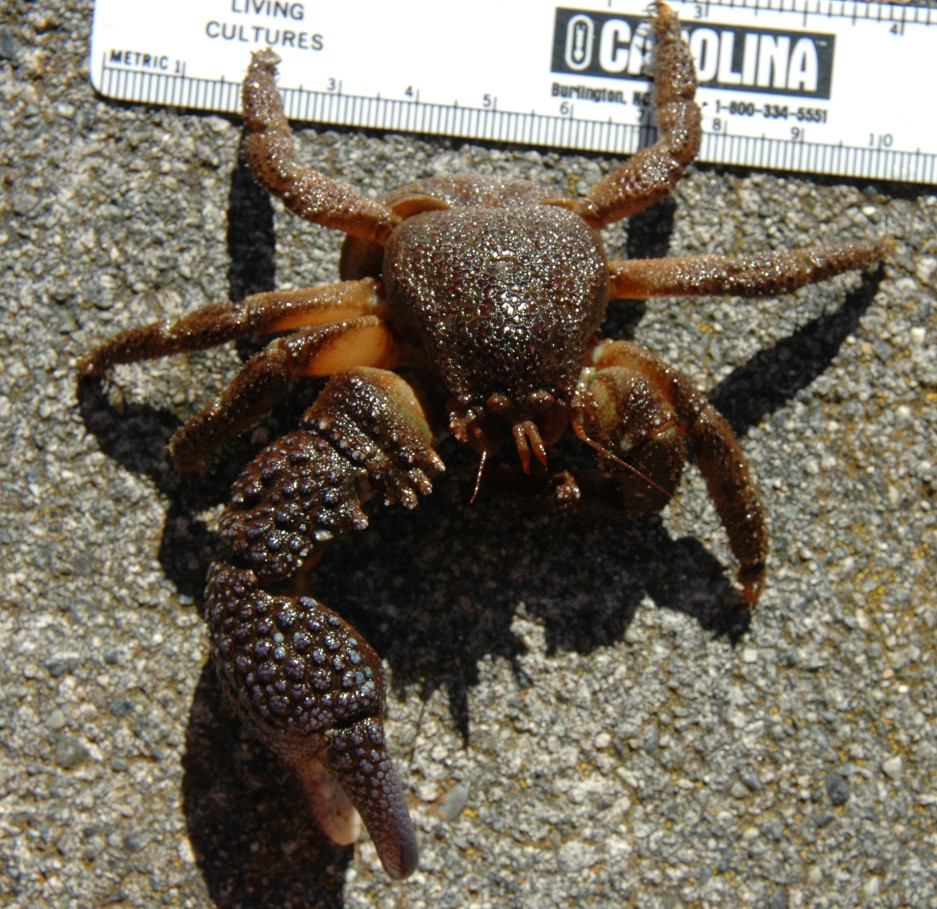How to Distinguish from Similar Species: Of the Lithodid crabs with soft abdomens, Placetron wosnessenskii has a much thinner abdomen and has scales on the carapace and legs. Acantholithodes hispidus has large spines on the rostrum. Hapalogaster mertensii and H. grebnitzkii have strongly flattened cephalothorax and legs and have spines on the upper surface of their chelipeds.
Geographical Range: Amchitka Island, AK to Monterey, CA; eastern Russia, Japan, Korea. Mostly on the open coast. Rarely seen in the San Juan islands and is said to not to occur in Puget Sound; rare in California.
Depth Range: Middle intertidal to 15 m
Habitat: Under encrusting coralline algae, under Mytilus californianus mussels or Anthopleura xanthogrammica anemones, in crevices, and in other protected areas
Biology/Natural History:
These
crabs are often found in pairs, and may be in such a tightly secluded
space
that they appear to be trapped. They feed by straining
plankton from
the water with their third maxillipeds.
Captive individuals also catch worms and small crustaceans with their
small
claw and crush mussels with the large claw. Predators include
black
oystercatchers.
| Return to: | |||
| Main Page | Alphabetic Index | Systematic Index | Glossary |
References:
Dichotomous Keys:Coffin, 1952
Hart, 1982
Kozloff 1987, 1996
Smith and Carlton, 1975
Wicksten, 2009
General References:
Harbo,
1999
Jensen,
1995
Johnson
and Snook, 1955
Kozloff,
1993
Morris
et al., 1980
Niesen,
1997
O'Clair
and O'Clair, 1998
Sept,
1999
Scientific Articles:
Web sites:
General Notes and
Observations: Locations,
abundances, unusual behaviors:
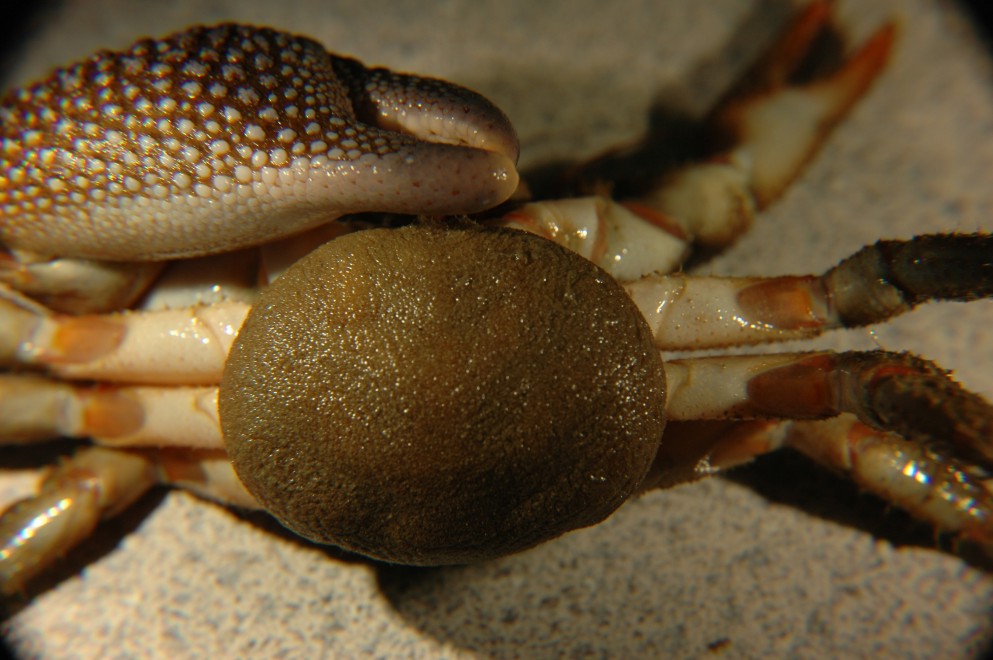
The abdomen of this species is thick and soft. The basal
segment
and the two distal segments have some calcified plates, which are not
evident
in this view.
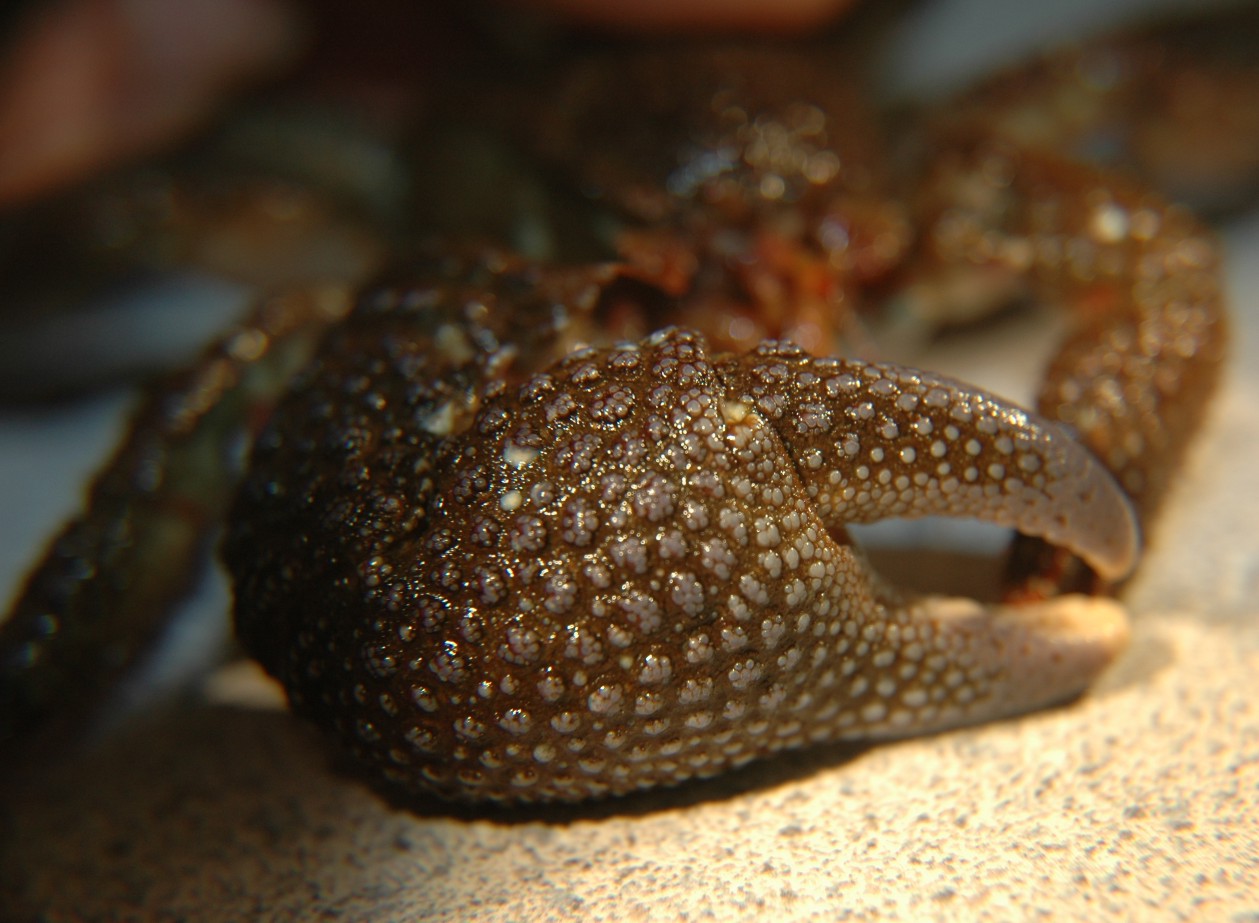
One claw is much larger than the other. The "palm" of the chela
on the large claw is longer than the dactyl.
The upper surface of the chelipeds
is covered with prominent, granular tubercles
but with no obvious spines.
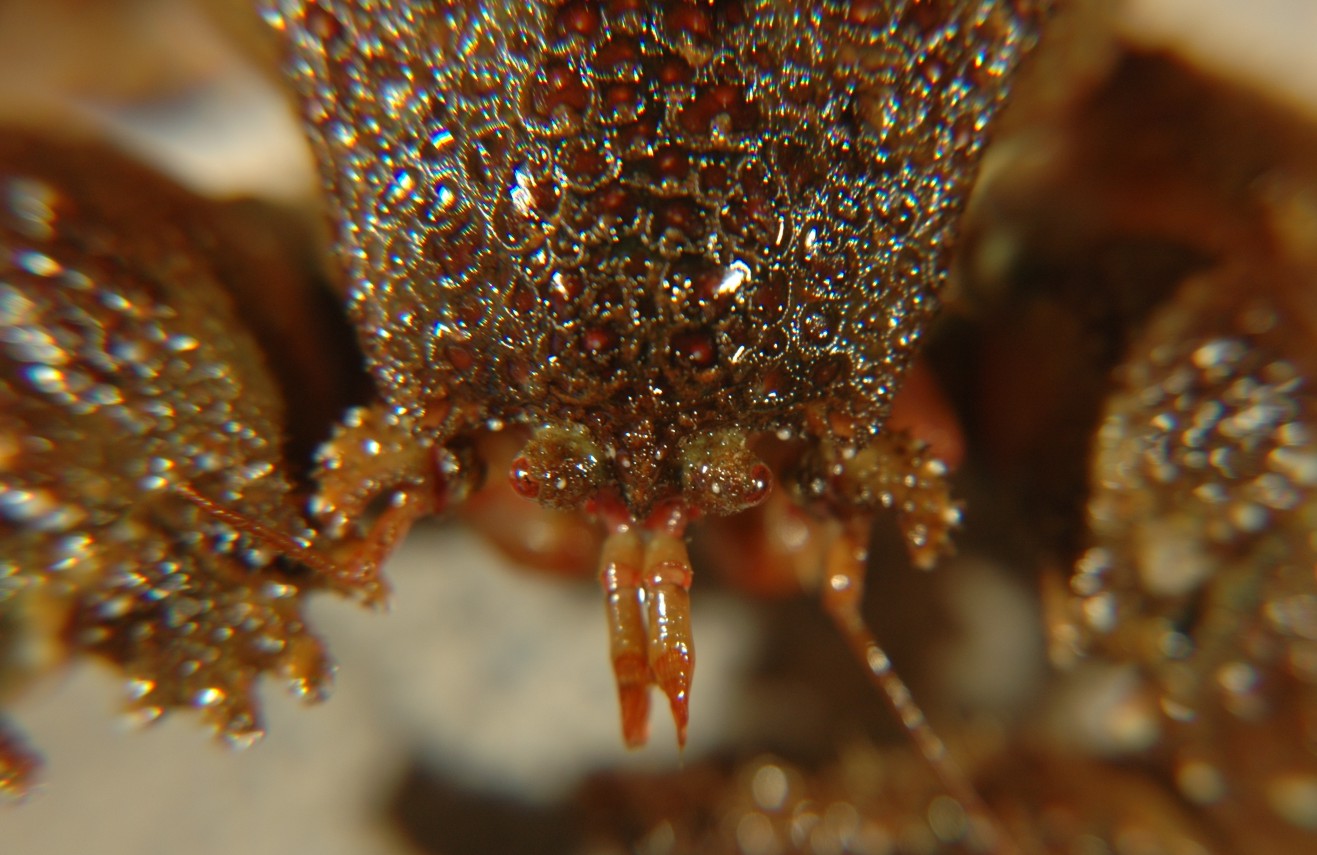
The rostrum
is short. The carapace
has orange-red tubercles
with a white spot in the middle.
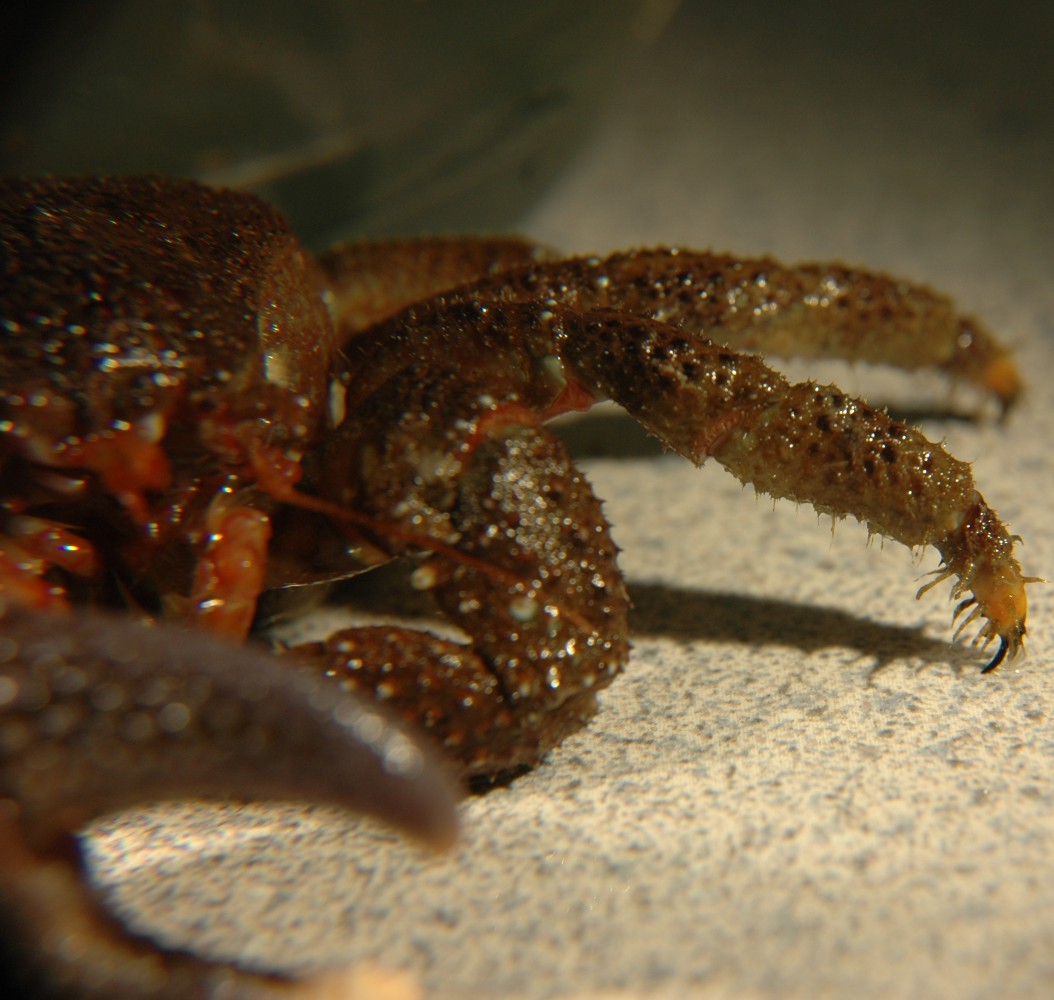
The walking legs have setae and granules but no spines.
Authors and Editors of Page:
Dave Cowles (2007): Created original page
CSS coding for page developed by Jonathan Cowles (2007)
